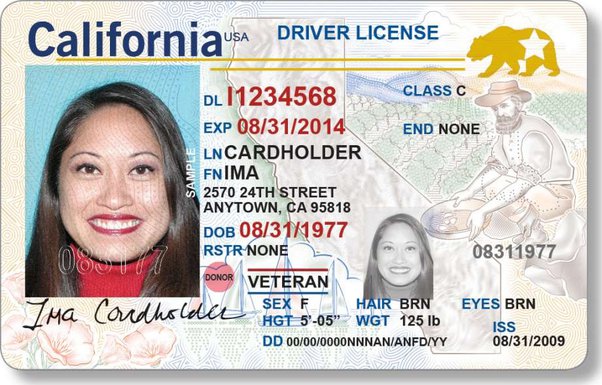In March of 2021, Google made a bold claim: with no relevant experience required, you will get a job in data analytics, with help from Google, by completing their Data Analytics Professional Certificate.
Just like that, after completion, you are thrust into a world of $67,900 starting salaries and hundreds of thousands of job opportunities.
This widely anticipated course will become fully available starting in April, which makes this the perfect time to begin preparing for this course.
There is no better time than right now to challenge yourself and to develop new skills. Plus, if this pandemic has taught us anything, it’s that upskilling is never a waste of time and can help guarantee you better employment options. With 337,400 job openings in data analytics in the United States alone, this reasonably-priced, self-paced, and easily-accessible course is the perfect way to get your foot in the door without having to splurge on a bootcamp or Masters degree.
Contents
What is the Google Data Analytics Professional Certificate?
The Google Data Analytics Professional Certificate is professional training designed by Google that prepares you to become a junior data analyst, a database administrator, and many other positions.
This certificate aims to fill the gap in data analytics positions seen in all industries.
Google has created 8 courses that can be completed in less than six months with less than 10 hours put in every week.
The courses are completed through the online learning platform, Coursera.
What do you learn?
Over the course of the Google Data Analytics Professional Certificate, you will learn the basics and fundamental skills to enter an entry-level data analyst position. This begins by learning about the practices and processes that people in these positions use in their daily work. Following that, you will learn how to use the tools necessary for data cleaning, organizing, analyzing, and visualizing, including:
- Spreadsheets (for collecting and organizing data)
- SQL (for organizing and extracting data)
- Tableau (for visualizing data)
- R (for analyzing and wrangling data)
- Presentations (for explaining and sharing your discoveries)
Google also supports you through the whole job preparation process with a resume-building tool, mock interviews, and career networking support to help you get a job after program completion.
What is the course curriculum?
Google has developed 8 courses to help you become proficient in data analysis. The first five courses are currently available, with the last three projected to be released in April.
Course 1: Learning the Foundations of Data Analysis
This introductory course starts at the very beginning with a gentle introduction into what the data analysis job position entails, what a data analyst does daily, the skills a data analyst needs to be successful, and a description of the first basic terms and concepts that you will need to complete the course.
Course 2: How to Ask the Right Questions to Make a Data-Driven Decision
The second course in the program focuses on helping you learn how to ask the right questions to make a data-driven decision. This course covers the basics of effective questioning, how to apply those questioning techniques to real-world business situations, and the importance of using structured thinking and clear communication with stakeholders to achieve business objectives.
Course 3: Data Preparation
The third course covers everything you need to know about data preparation and extraction. This course covers the use of spreadsheets and SQL to extract data, how to organize and protect data, and the basics of data ethics and privacy.
Course 4: Data Cleaning
This course covers data cleaning using spreadsheets and SQL, and the development of data cleaning reports.
Course 5: Data Analysis
The fifth course focuses entirely on the data analysis process using spreadsheets and SQL. In this course, you will learn how to use formulas, functions, and SQL queries to conduct an analysis.
Course 6: Data Visualization
The sixth course in this program covers the storytelling aspect of data analysis. This course focuses on helping you understand how to bring your data to life. You will learn how to use Tableau to create dashboards and visualizations that you will then learn how to present to an audience.
Course 7: Using R Programming for Data Analysis
This course covers one of the programming languages often used in data analysis. You will learn how to use R and RStudio to clean, organize, analyze, visualize, and report data analyses.
Course 8: Capstone Project
The final course in the program begins with teaching you the benefits of case studies and portfolios for your job search and goes over job-hunting and interview skills. In the end, you are given the option to complete a capstone project that can be used for your professional portfolio.
Who this course is and isn’t for.
It’s important to make sure you check a few boxes before jumping head first into this program.
This course is for people who: are complete beginners with data analysis and have no prerequisite knowledge; have 10 hours a week to dedicate to studying; want to learn the basics of data analysis.
This course is not for people who: are already proficient in data analysis (this course is at a very beginner level, and therefore is not for those who already have experience or have taken other data analytics MOOCs); are looking to work in Python (though Python is easily learned after the fact); don’t have time to dedicate to the course (data analysis is best learned using a regular schedule).
How much does the program cost?
The Google Data Analytics Professional Certificate is accessed through Coursera, which has a $39 (USD) monthly subscription fee. Therefore, if you take six months to complete the course, the cost will be approximately $234 (USD).
Because of this monthly subscription fee, it makes sense to try to complete the course as quickly as possible to reduce the cost. However, it’s important to bear in mind that this cost is much less than if you were to attend a bootcamp (which can be anywhere between $3,000 to $15,000) or if you were to get a Masters’s in data science.
Coursera has financial aid available for those who need it.
How to study for the Google Data Analytics Professional Certificate.
With MOOCs having an average completion rate of less than 10%, it’s important to set yourself up for success early on by figuring out how you plan to study for this certificate.
Having a study plan, especially if self-study isn’t really your thing, will help you get through this course and retain everything that you learned.
As someone who is self-studying their entire university degree and currently has a 3.8 GPA, I feel particularly qualified to write about how to set yourself up for success when it comes to self-studying.
Google suggests that you can complete the course in 6 months if you dedicate 10 hours of your week to studying and going through the course material. For your average working professional looking to make a career change, this timeline is reasonable. With that being said, this course can be done in a shorter amount of time (2–3 months) if you have no other commitments.
With the program clocking in at 180 hours of instruction and hundreds of practice-based assessments, you can’t just sit there and absorb the information as you watch the videos. To get the most out of the course and the small amount of time you have every day to complete it, you need to be actively learning through the whole process.
Set up a schedule.
The first step in completing this course is to set up a study schedule for yourself that you actually follow.
It’s easy to tell yourself that you will study for ten hours a day until you actually get to that day and realize how grueling ten hours of studying really is. Within a week, you’ll be burnt out and one of the 90% of people who don’t finish MOOCs.
Instead, pace yourself by creating a balanced schedule.
Ten hours per week of study can be broken up into 4 days with 2.5 hours of study each day. When you realize that the average person spends three and a half hours on their phone every day, it suddenly becomes more feasible to use your time more constructively.
From there, you plan out what parts of the course you want to get accomplished in those 2.5 hours.
For example:
Monday: Complete Week 1 lectures, readings, and quizzes.
Wednesday: Complete Week 1 practice exercises.
Friday: Complete Week 2 lectures, readings, and quizzes.
Sunday: Complete Week 2 practice exercises.
By printing out this schedule and keeping it in a prominent place, you’re always reminded of your commitment to completing this program.
Keep yourself accountable.
Making a schedule is all well and good, but only if you stick to it and complete everything you need to for the week.
Whether you keep yourself accountable by live-streaming or filming your study sessions, joining a study group, blogging about your studying, or having a trusted friend remind you of your need to study, the important thing to remember is to keep your accountability insurance (the thing that keeps you motivated to study) consistent.
Tech subjects are best learned consistently and regularly, so you must establish a disciplined study habit early on.
Aim for a broad understanding of topics.
Studying tech is completely different than studying anything else. Where normally you would need to have a deep understanding of topics to be able to succeed in a given field, in tech, you simply need a broad understanding of topics (and the willingness to admit when you don’t know something).
Due to the open nature of tech education, it’s incredibly easy to Google anything you don’t know. Any lack of depth of knowledge can be counteracted by the ability to learn on the fly by searching for anything you don’t understand.
Therefore, your time is better spent on getting a broad understanding of all of the topics in this program and learning how to apply them effectively.
Take effective notes.
As mentioned earlier, studying tech is completely different than anything you’ve probably studied before. As such, the type of notes you take will also be different.
To go along with our idea of having a broad understanding of concepts, it’s important to take notes that help with this broad understanding. The key is to not take extensive notes. Instead, focus on grasping general concepts and writing notes that help you apply them.
Writing notes has been a proven learning tool to help students retain information, which is why it’s highly recommended — especially when self-studying. Not only does it help you learn the important stuff, but it also helps you remain engaged and actively learning.
Don’t skip the capstone project.
Google has made the final capstone project for their program optional, which means that you don’t have to complete it to pass the course.
While going through 180 hours of learning material and completing all of the learning exercises can make you feel like you know everything there is to know about data analysis, it’s important to remember that the best way to learn is by doing.
With that, comes completing the capstone project.
While it’s easy to complete all of the different steps of data analysis on their own, it’s a whole new thing to put them all together and complete a full analysis.
Most MOOCs don’t offer a capstone project due to the demands on the instructors and the extra effort that has to be put in by the course provider. In short, it would be silly to pass up the chance to work on a capstone project with Google employees available to you to answer any questions you come across.
By putting all the pieces together, you allow yourself to learn by doing. This action will stay with you far more than if you were to just complete each section of analysis and forego the capstone project.
Final thoughts.
Only such a claim of guaranteed job success could be touted by a company such as Google, though it remains unfounded. Time will tell if this program is effective in getting people with no previous experience into data analyst roles.
Regardless, this well-rounded program offers an amazing opportunity for a world-class education at a fraction of the cost it would normally be for a comparable bootcamp or Master’s degree.
By going into this program with your eyes wide open and a solid plan in place, there’s no reason why you can’t complete this program and become one of those lucky individuals who make it into this competitive industry.











